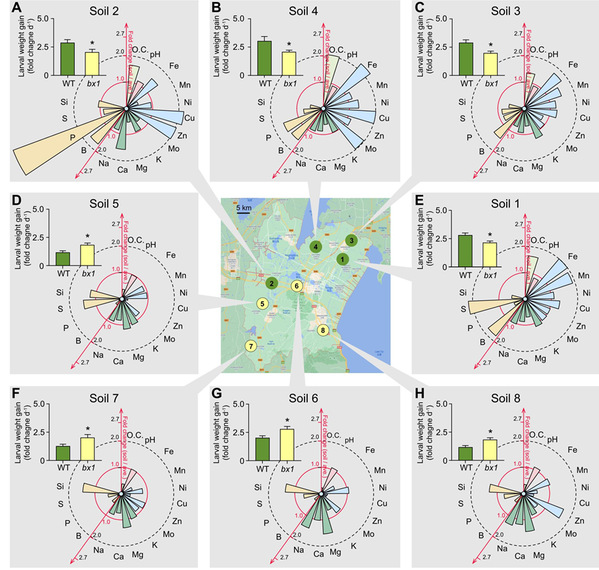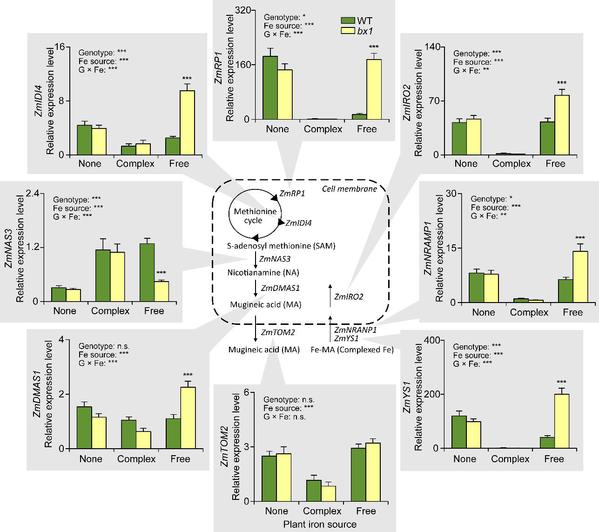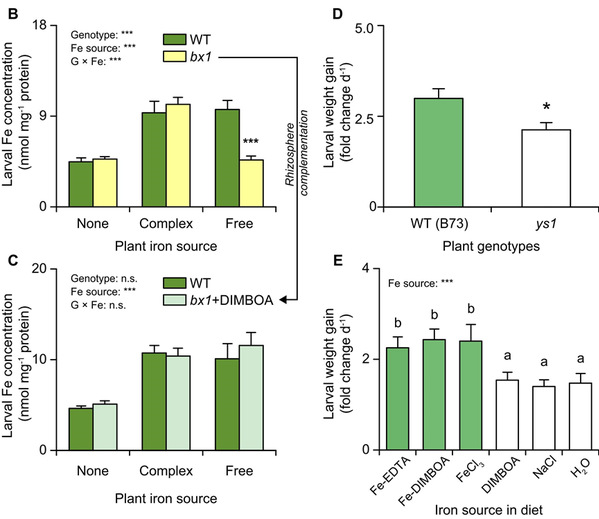China
October 25, 2021
Plant roots continuously secrete primary and secondary metabolites into soil. These exudates are key players in the interactions between plants, animals and soil in the rhizosphere. Benzoxazinoids are a group of secondary metabolites widespread in grasses (Poaceae), including maize, wheat and rye. These metabolites are regarded as general defense metabolites in plants, being associated with a wide spectrum of direct antifeedant, insecticidal, antimicrobial, and allelopathic activities. They are also one of the most abundant secondary metabolites in the root exudates.
Prof. XU Jianming at the Zhejiang University College of Environmental and Resource Sciences led the research which investigated the underlying mechanisms of iron in regulating benzoxazinoid-mediated plant-herbivore interactions. Their findings are recently published in PNAS, entitled “Soil chemistry determines whether defensive plant secondary metabolites promote or suppress herbivore growth”.
The fall armyworm (Spodoptera frugiperda) is one of the major lepidopteran pests of maize. It feeds on maize leaves, and causes severe yield losses all over the world. Maize plants can synthesize benzoxazinoids as a “natural pesticide” to defend against pests. However, scientists have found that this “natural pesticide” isnot always functional in defending against the fall armyworm. What makes this “natural pesticide” lose its killing effect?
 The effect of benzoxazinoids on herbivore performance depends on soil types
The effect of benzoxazinoids on herbivore performance depends on soil types
Benzoxazinoids can be synthesized in leaves and roots and released into the soil as secretions. To test whether the defensive function of benzoxazinoids is influenced by soil properties, XU Jianming et al. collected two types of soil (Anthrosols and Ferrosols) from eight different arable fields in Yixing, Jiangsu Province.
They found that the secreted benzoxazinoids could interact with the soil, thereby increasing the amount of iron in plant leaves. Iron ions are known as an essential and limited micronutrient, and they play crucial roles in the synthesis of plant chlorophyll and other substances.

Interactions between root iron supply and benzoxazinoids determine leaf iron homeostasis
“We found that iron ions can chelate with benozoxazinoids, and then modulate the leaf iron homeostasis, probably due to the enhanced iron transportation from roots to leaves after the chelation,” said Prof. Xu.
 Interactions between root iron supply and benzoxazinoids determine herbivore iron supply
Interactions between root iron supply and benzoxazinoids determine herbivore iron supply
Iron ions can enhance photosynthesis and contribute to corn yield. The researchers found that the failure of the original “natural insecticide” is owed largely to the availability of soil iron ions. “This research will provide new perspectives for crop breeding, and new targets for breeding pest-resistant plants,” said Xu.
More information:Prof. XU Jianming and Prof. Matthias Erb from University of Bern are corresponding authors. Prof. HU Lingfei fromthe Zhejiang University College of Environmental and Resource Sciences is the first author.